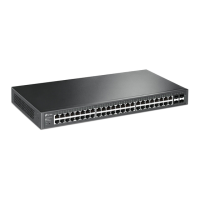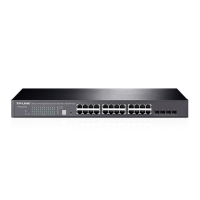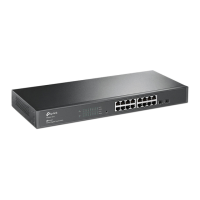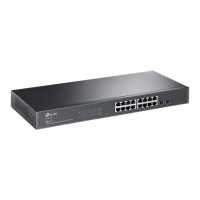Mirroring Traffic Mirroring
Configuration Guide
727
Note:
•
The member ports of an LAG cannot be set as a destination port or source port.
•
A port cannot be set as the destination port and source port at the same time.
1.2 Using the CLI
Follow these steps to configure Mirroring.
Step 1 configure
Enter global configuration mode.
Step 2 monitor session
session_num
destination interface { fastEthernet
port
| gigabitEthernet
port
| ten-gigabitEthernet
port
}
Enable the port mirror function and set the destination port.
session_num:
The monitor session number. It can only be specified as 1.
port
: The destination port number. You can specify only one destination port for the mirror
session.
Step 3 monitor session
session_num
source { cpu
cpu_numbr
| interface { fastEthernet
port-list
| gigabitEthernet
port-list
| ten-gigabitEthernet
port-list
| port-channel
port-channel-id
}}
mode
Configure ports or LAGs as the monitored interfaces.
session_num
: The monitor session number. It can only be specified as 1.
cpu_number:
The CPU number. It can only be specified as 1.
port-list:
List of source ports. It is multi-optional.
mode
: The monitor mode. There are three options: rx, tx and both:
rx: The incoming packets of the source port will be copied to the destination port.
tx: The outgoing packets of the source port will be copied to the destination port.
both: Both of the incoming and outgoing packets on source port can be copied to the
destination port.
Note:
You can configure one or more source interface types (ports, LAGs and the CPU) according
to your needs.
Step 4 show monitor session
Verify the Port Mirror configuration.
Step 5 end
Return to privileged EXEC mode.
Step 6 copy running-config startup-config
Save the settings in the configuration file.
The following example shows how to copy the received and transmitted packets on port
1/0/1,2,3 and the CPU to port 1/0/10.
Switch#configure
Switch(config)#monitor session 1 destination interface gigabitEthernet 1/0/10

